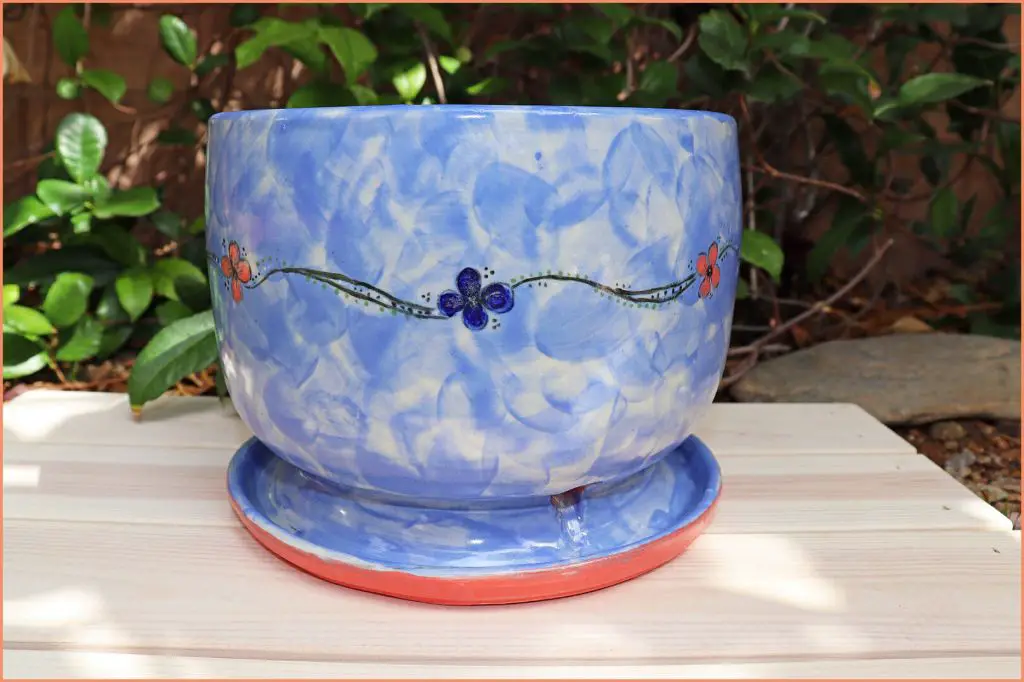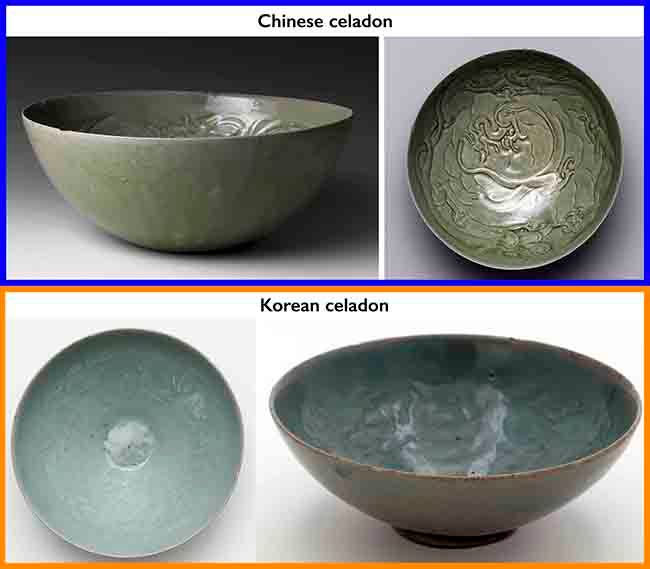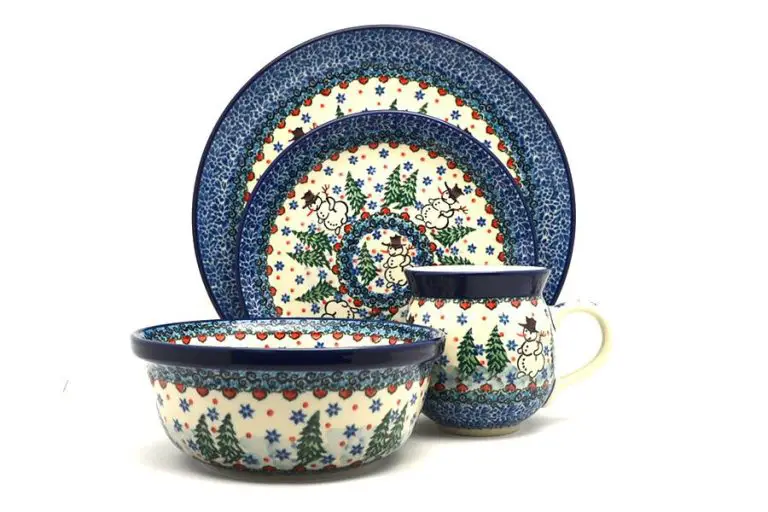Is Underglaze Better On Bisque Or Greenware?
Underglaze is a colored clay slip used to decorate pottery. It comes in a variety of colors and can be painted onto either greenware (unfired clay) or bisqueware (clay that has been fired once at a low temperature). Underglaze provides vibrant colors but requires a clear glaze over the top and a higher temperature firing to permanently set the colors.
There is some debate among potters about whether it is better to apply underglaze to greenware or bisqueware. Applying underglaze to greenware allows the colors to saturate better into the clay body for a more vibrant effect. However, bisqueware provides a harder surface that is more durable for handling while decorating. There are advantages and disadvantages to each approach.
Pros of Underglaze on Bisque
Underglaze colors tend to be brighter and more vibrant when applied to bisque rather than greenware. The porous, absorbent nature of bisqued clay allows the underglaze to soak in and adhere well, creating saturated colors (The Art of Education, 2018). The smooth surface of bisqueware also provides more control for finer details and crisp lines compared to greenware’s rougher, damp surface where underglaze can bleed more easily (Reddit, 2019). Painting intricate designs and patterns is often easier with underglaze on bisque.
Cons of Underglaze on Bisque
Underglaze applied to bisqueware can have some drawbacks compared to applying it to greenware. One potential issue is that underglaze on bisqueware can chip or flake off more easily than when applied to greenware. The bisque firing process makes the clay body more porous and prone to chipping if the piece is handled roughly after underglazing. According to one source, “The underglaze adheres differently to the now porous clay body, so care must be taken when handling to avoid chips” (https://potterycrafters.com/applying-underglaze-on-greenware-vs-bisqueware/). Gentle handling and proper underglaze application techniques can help minimize chipping.
Another downside is that underglazed bisqueware requires an additional clear glaze applied over the top to seal and protect the underglaze decoration. This adds an extra step compared to simply glaze firing greenware that has been underglazed. The clear glaze also interacts with the underglaze colors, sometimes altering their original hues. As one reddit user commented, “I don’t like having to put clear over the top of underglazes on bisque. It can make some colors look a little different” (https://www.reddit.com/r/Pottery/comments/15dqufi/what_do_you_think_about_applying_underglaze_on/). So the extra process of adding clear glaze and potential color shifts are disadvantages of using underglaze on bisqueware.
Pros of Underglaze on Greenware
One of the main pros of using underglaze on greenware rather than bisqueware is that the underglaze bonds better to the clay body when applied at the greenware stage. When clay is fired to the bisque stage, it becomes less porous and absorbent. Greenware, on the other hand, provides an absorbent surface that allows the underglaze to penetrate the clay and achieve a strong mechanical bond.
According to [1], underglaze applied to greenware doesn’t require an additional clear glaze layer. The underglaze absorbs into the surface at the greenware stage, so when the clear glaze is applied and the piece is fired, the underglaze fuses with the glaze to create a permanent bond. With bisqueware, the underglaze sits on top of the non-porous surface, requiring a protective layer of clear glaze that can wear over time.

Applying underglaze to greenware also allows for greater design flexibility according to [2]. The underglaze can be scratched and carved into to create textured effects that aren’t possible on hard bisque surfaces. Underglaze also blends more smoothly into the greenware clay body.
[1] https://bigceramicstore.com/pages/info-ceramics-tips-tip67_underglazes
[2] https://potterycrafters.com/applying-underglaze-on-greenware-vs-bisqueware/
Cons of Underglaze on Greenware
There are some downsides to applying underglaze directly onto greenware instead of bisqueware. According to a post on the Reddit Pottery community, underglaze colors tend to be “less vibrant” on greenware compared to bisqueware (source). The porous nature of unfired clay makes it more difficult for the underglaze to fully saturate the surface, resulting in colors that are more muted and opaque.
Additionally, it can be harder to achieve fine details and crisp lines when underglazing greenware vs bisqueware. As explained on Ceramic Arts Daily, “the colors may chip off if the clay body is not completely dry before firing” (source). The soft and porous clay body allows underglaze to seep in unevenly, making it difficult to control.
Application Tips
When applying underglaze to bisqueware, it’s best to use soft brushes and limit thinning the underglaze. Bisqueware’s porous surface readily absorbs the underglaze, so you don’t need to thin it much. Use soft brushes like a #10 round or fan brush to gently apply the underglaze and blend colors. According to https://potterycrafters.com/how-to-use-underglaze/, thinning the underglaze too much on bisque can cause it to spread unpredictably into the clay body.
For greenware, the clay surface is less porous so underglazes can be thinned more to achieve smooth applications with better blending. The https://www.thesprucecrafts.com/when-to-underglaze-pottery-2746192 suggests using stiffer bristle brushes like a #6 round or liner brush on greenware. The stiff bristles allow you to rub the thinned underglaze into the clay surface for good adhesion and help prevent lifting or flaking off.
In general, underglaze viscosity should match the porosity of the clay surface – thicker for bisqueware, thinner for greenware. Soft brushes for bisque, stiffer for greenware. Test your underglaze consistency and brushes on test tiles first to get the right pairing.
Firing Considerations
The firing schedule will differ slightly depending on if you apply underglaze to bisque or greenware. When applying to bisque, the piece has already gone through an initial bisque firing, so the underglaze only requires one firing to maturity around cone 06. However, when applying to greenware, the piece requires a bisque firing first around cone 08, followed by a second firing with the underglaze to maturity around cone 06 [1].
To prevent flaws like pinholes, it’s important to follow the manufacturer’s specific instructions for firing temperature and ramp speed. Generally firing too fast can cause pinholing with underglazes. When firing greenware, longer hold times at lower temperatures are needed to allow water and gases to fully escape from the clay body before vitrification. Using a ventilated kiln and proper kiln wash are also recommended for flaw-free results [2].
Design Options
There are some key design differences when using underglaze on bisque versus greenware. The porous, absorbent surface of bisque allows underglazes to spread easily and blend softly for smooth color transitions. This makes bisque well-suited for more Impressionistic styles with blended edges (source). The hard surface of leather-hard greenware causes underglaze to sit on top with crisp edges ideal for graphic styles like sgraffito. Underglaze also adheres better to greenware allowing for more intricate detailing (source).
When applying to bisque, the porous clay absorbs underglaze quickly so the artist must work briskly to avoid overlapping colors. On non-absorbent greenware, underglazes remain wet longer allowing more working time to blend or feather edges. Glazing over underglaze on bisque can cause muddying as the glaze leaches color back out. With greenware, the glaze seals the underglaze for truer color results.
Cost Comparison
When comparing the costs of using underglaze on bisque versus greenware, some key factors to consider are the price of materials and equipment and the differences in time and labor.
Underglaze can be more expensive to apply to bisque because it often requires an additional firing. Bisque pieces must be fired once before applying underglaze and then fired again after underglazing to set the colors. With greenware, the underglaze can be applied before the first firing. The extra firing adds kiln time and energy costs when using underglaze on bisque.
On the other hand, underglazing on bisque can save on potential wasted materials. When applied to greenware, underglaze colors can sometimes become muddled or react with the clay body during firing. This may require redoing pieces. When applied to an already fired bisque piece, the underglaze results may be more predictable. So there is less risk of wasted time and supplies.
The application process can be faster on bisque than leatherhard greenware because bisque has an absorbent surface that readily takes the underglaze. Greenware may require extra drying time or a bisque fire before successfully applying underglaze. However, the extra firing makes the bisque process more time consuming overall.
In summary, underglazing on greenware skips a firing and can save energy costs but has higher risks of application issues. Underglazing on bisque requires more firings but can save material costs and time spent redoing failed pieces. Consider the prices of supplies, kiln time, and labor to determine the most cost-effective option for a particular project.
Conclusion
In summary, there are pros and cons to using underglaze on both bisque and greenware. On bisque, underglaze results in a smoother finish but can chip more easily. On greenware, underglaze adheres better but can have a bumpier texture. For fine details, bisque is preferable, while for large solid areas of color, greenware works better.
When choosing between bisque and greenware, consider the project and desired results. For pieces with intricate brushwork or small details, bisque allows better control. For solid coverings of large areas, greenware helps underglaze stay put when firing. Smoothness or texture are also factors.
Based on these tradeoffs, using underglaze on bisqued pieces is recommended for decorative objects with delicate details. For functional ware with large areas of color, applying underglaze to greenware may produce better results. Test on sample pieces when possible to compare. With either option, proper application and firing methods help ensure success.


